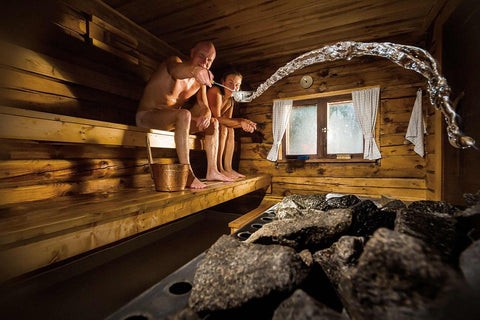The Ultimate Guide To Traditional Sauna
Table of ContentsThe Traditional Sauna PDFsUnknown Facts About Traditional SaunaUnknown Facts About Traditional SaunaThe Best Strategy To Use For Traditional SaunaSome Known Details About Traditional Sauna
The majority of the weight lost in a sauna is water loss and is re-gained upon rehydrating. Without a doubt sauna can be a crucial part of a healthy weight loss program. To consider the distinctions between standard and IR saunas, I will separate these right into proven, theoretical, and fabricated distinctions.Hence, the most popular point in the saunawhich is at the ceiling straight over the sauna heateris usually between 185 and 190 F. Claims that a conventional sauna surpasses 200 F is just not true and not suitable for electric saunas offered in the United States. The temperature for a far-infrared sauna is normally set in between 120 and 140 F; however, unlike the typical sauna, the objective in and IR room is not to attain a heat.
Due to the fact that of this, the temperature level difference is nearly pointless, since profuse sweating causes both sauna types, however the approach of heating the body is various. In an IR sauna the bather will certainly feel warm and will certainly sweat profusely, but at a lot reduced temperatures (Traditional Sauna). Thus, if the objective is to invest longer time periods in the sauna, the IR sauna is an excellent selection
When a typical sauna has been properly warmed, the sauna wall surfaces are warm, the air temperature level has accomplished established temperature level and the rocks are super heated. As a fascinating side note, the warmed wall surfaces and the rocks are discharging far-infrared warmth, combined with the heated air, to produce an "covering warm".
The 6-Minute Rule for Traditional Sauna

When the high temperature is achieved, the elements cycle on and off to keep the heat. The majority of standard sauna individuals delight in pouring water over the rocks to develop heavy steam to raise sauna moisture levels. The benefits of putting water over the rocks include: making the room extra comfy, dampening the nasal passages, and allowing the usage of aromatherapy by mixing essential oils with the water.

When the power goes into the body, it creates the body temperature to raise and ultimately try here causes perspiration. In an infrared sauna it is very important for the emitters/heaters to remain on nearly constantly. Considering that there is no mass of rocks to preserve heat, the sauna will certainly cool down if the emitters turned off.
As pointed out above, the sauna bather in an infrared room desires to place himself in front of operating emitters to obtain optimal gain from the warm. The home heating time for both spaces can be extremely different, depending upon just how the rooms are utilized. For a typical sauna, a bather should enable 30-40 mins for the space to attain a desired temperature and to effectively pre-heat the rocks.
Excitement About Traditional Sauna
A well constructed sauna will generally achieve a temperature of 150-160 F in concerning 30-40 mins. For hotter temperature levels, the area might require to warm for a longer period.

Typical saunas have a tendency to be bigger (for this reason make use of more power) than infrared saunas, although conventional saunas are absolutely offered in one and 2 person sizes. For a two-person traditional sauna, 5x6 or 5x7 size is most preferred. The top bench can easily seat 2 or three people and is additionally enough time to relax throughout the sauna session.
The smart Trick of Traditional Sauna That Nobody is Discussing
The typical expense per kWH of electricity in the U.S. is roughly $0.11, so a 4.5 kW heating unit will cost around $.50 to compete one hour, if the heating system runs continually for one hour. Generally a sauna heater will run for 75% of the first hour and 50% of subsequent hours on because the aspects cycle once the set temperature is my response achieved.

There is a seldom reviewed distinction in the social experience between the 2 spaces. While our society has actually lost several of the social benefit of the traditional sauna experience, it can be really socially gratifying (Traditional Sauna). From family time in the sauna, to heart-felt discussions with loved ones, to index sauna partiesthe typical sauna experience can cause intimate socializing
Traditional Sauna Fundamentals Explained
A lot of greater end infrared areas consist of colored light therapy, sound systems and full-glass fronts.